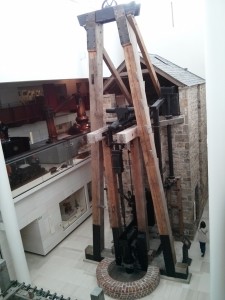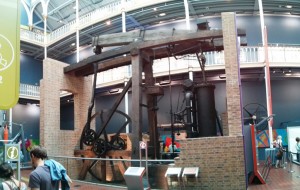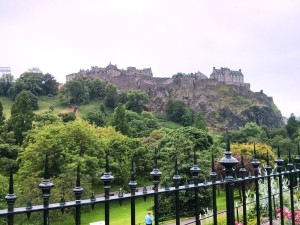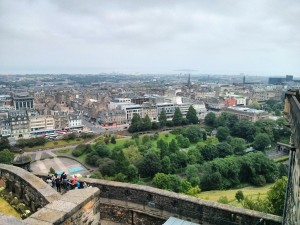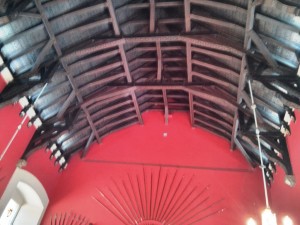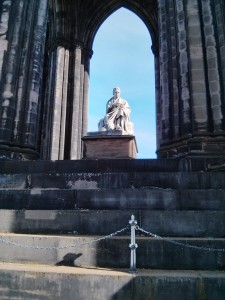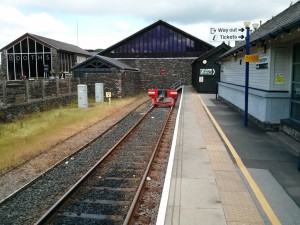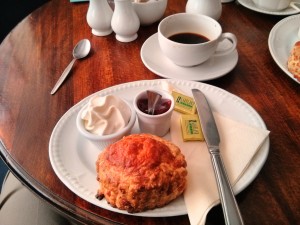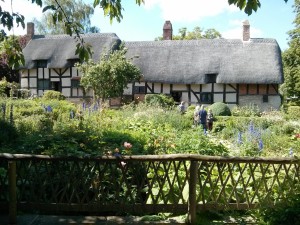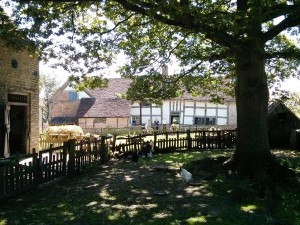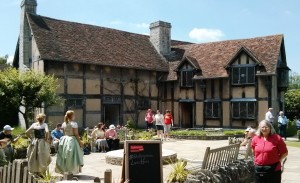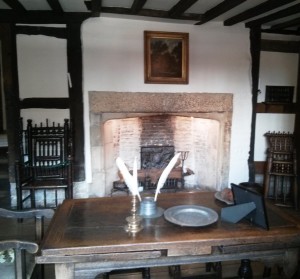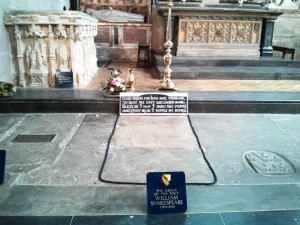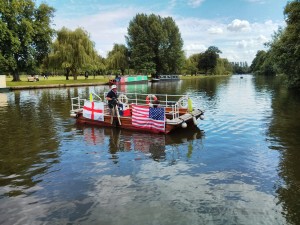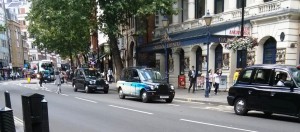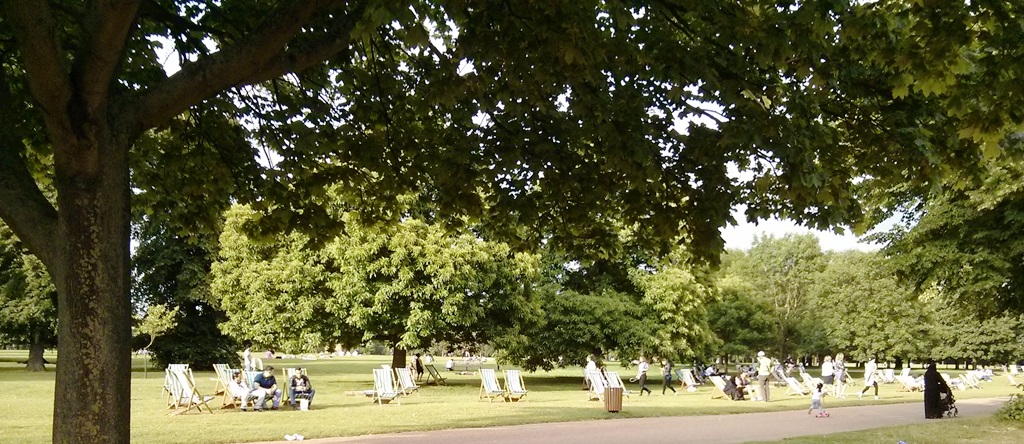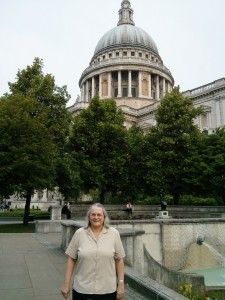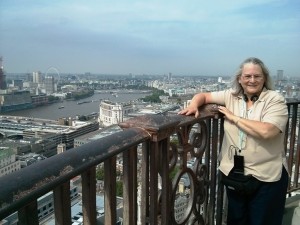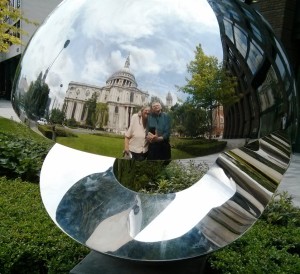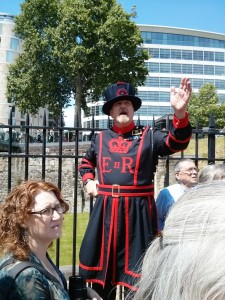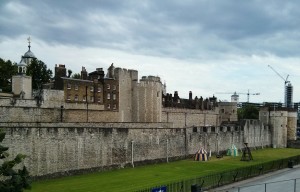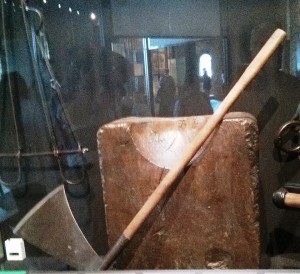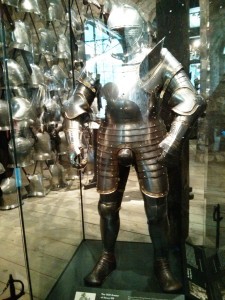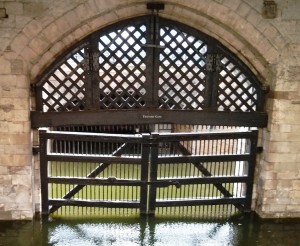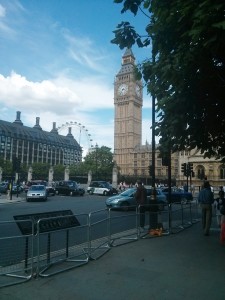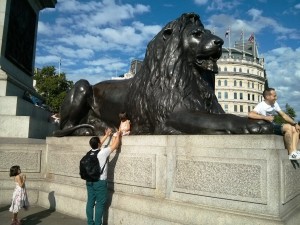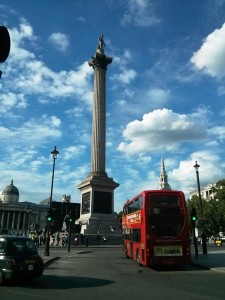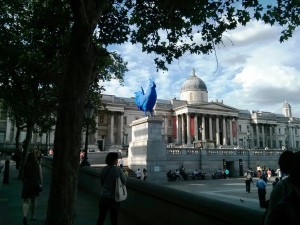Tuesday, June 10:
This was an ambitious day. We took the train for a day-trip to Bletchley Park. When we got back, we had tickets to the London Ballet at the Opera House.
We started out going to Bletchley Park, where the WW II code breaking effort against the Germans and Japanese was headquartered. I’ve long been interested in this, partly because of the secrecy and partly because of my work with cryptography at Schlumberger / Axalto / Gemalto. We started out being anxious about catching our train, which left from the Euston train station. We knew we had to switch tubes at the Victoria tube station. We had been there Sunday and had found it very confusing. We weren’t confident of our ability to navigate to Euston, and we woke up early. So we decided to go up to Euston right away and have breakfast in Euston. It turns out we got there with no troubles, and had almost 2 hours for breakfast. The nice thing was that we found an American-style diner for breakfast. Danita had an excellent waffle. I did not order quite as wisely, but my sausage and egg breakfast was perfectly acceptable. Best of all, we finally got good American coffee. Europeans love their espresso. I admit, their espresso is quite good. But for breakfast, I like having a large mug of coffee, preferably with free refills. Europeans aren’t big on refills. And their idea of American coffee is to add hot water to an espresso. The result is a mess. This diner actually had good American coffee, and even offered us one free refill.
The train ride was a little under an hour, and it was a delight. The train was clean, quiet, efficient, and on-time. I mean exactly on time. I looked at my watch when the train started pulling out of London. It was the exact advertised departure time to the minute. The same was true of our arrival in Bletchley, and also on the return trip. It turned out that most of our train rides were equally on-time. Our last ride was from Windermere to Edinburgh. The first train was a few minutes late. The second train got held up at a stop on the outskirts of Edinburgh, and got us in several minutes late. I wish we could find transportation like this in the US.
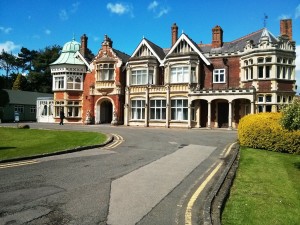
Bletchley Mansion
We started with a guided tour of Bletchley Park. This was a very good decision because the guide was very knowledgeable and gave us a great overview of the facility. It’s a good thing, because the area is pretty much a mess. It was so secret for so long that many of the buildings are rather run down. After it was finally opened, it was run with virtually no funds, basically by volunteers. Now the British government has decided to turn it into a first-class destination. They have a very long way to go. Some people were given the wrong origin for the tour and had to join us a few minutes late. We were given the correct destination (Hut 12), but the “1” was missing from the hut number and there was no sign indicating the tour started there. They have managed to assemble one major exhibit, which the printed material indicates is in Hut 6. However, this exhibit has been moved to behind the reception building. Hut 6 is closed, and no signs indicate where the exhibit is to be found. The site is used as a technology incubator, so over half the buildings are not open to the public. Again, no signs indicate what is open and what is not. In spite of these limitations, I had a great time and I learned a lot about the history and overall operation that I didn’t know. (This wasn’t a major attraction for poor Danita. But she was a good trouper.)
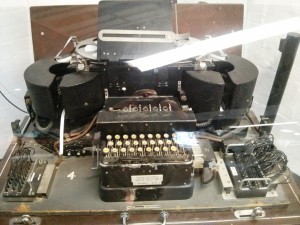
English Typex Machine with Enigma Mods. These machines worked like the German Enigma. They were used for message decryption, once the settings were known.
The best surprise about the Bletchley Park was their focus not on just the decryption, but on all aspects of the operation: monitoring and intercepting German messages, extracting meta-data, figuring out the code words or buzz words used by the Germans, and indexing their information. Only Brittian could have pulled this off. Their world-wide empire meant they had the world’s leading communications network, with outposts everywhere. Bletchley Park had a huge database to track and help interpret their information. There were no computer databases, of course. This database used people and punch cards. They ran an average of 5 million cards a day through their sorting and collating machines. Alan Turing’s work in decryption and computer design was awesome. But it would not have been useful without the rest of the operation, which was mind-mindbogglingly amazing.
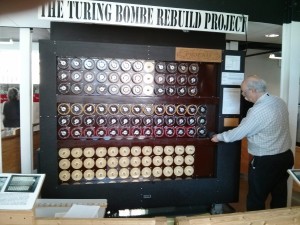
BOMBE
They have made a few of the buildings available to other groups to host other museums. One group runs the computer museum, which contains a rebuilt “BOMBE”. This machine was used to help decrypt messages encoded with the German Enigma machine. The mathematicians (mostly grad students from Cambridge or Oxford) would manually find a schema diagram. This diagram was entered in the BOMBE. Typically, 4 or five Enigma settings would match the schema. The BOMBE used rotary switches to step through all possible combinations, stopping on each setting that matched the schema. Each of these settings was used to try to decrypt the message, until they had the setting for the day. It was quite a clever machine and greatly sped up the decryption of messages. It was a joy to be able to watch it work.
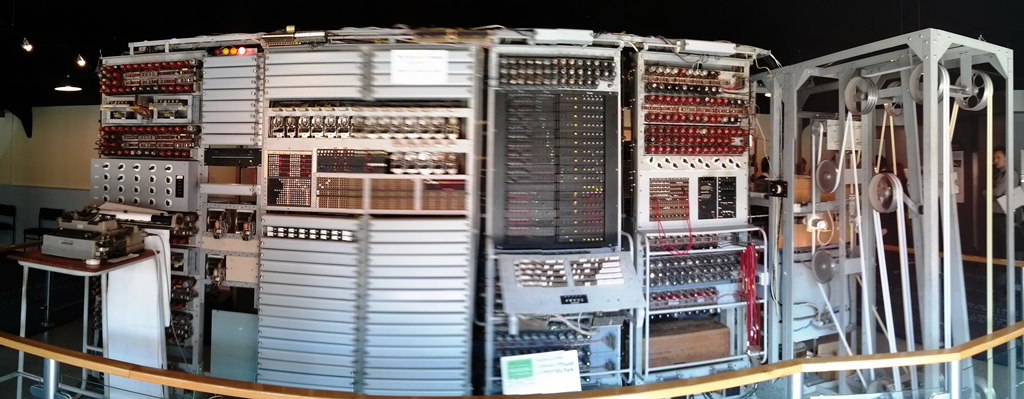
Colossus – This machine is not curved. The curving is an artifact of the pan0roma feature of my phone.
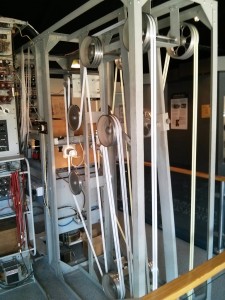
Colossus runs a fixed program, but the parameters can be changed. This punched paper tape enters the parameters.
The much more interesting machine, however, is Colossus. There are plenty of arguements about what has to be included before a machine becomes a “computer”. Depending on your definition, Colossus was either the first computer, or the direct predecessor of the first computer. The Colossus was used to help find schemas for signal traffic used by the German High Command. (This traffic used a machine more secure than the Enigma machine.) They built 10 Colossus machines. No two machines were the same. They were all destroyed, partially for security and partially because the scientists and engineers were quickly moving on to better machines. However, there was enough information available to rebuild Colossus. I saw the rebuilt Colussus and watched it work. It’s a 100% functional machine, completely true to the original. It’s the only one in the world, and it was amazing to watch it work. Colussus wasn’t officially open for tourists Tuesday. They had a tour, but the tour didn’t include it. However, I was able to sneak in behind a school group. After the group moved on, one of the guys stayed behind to show me a few more things and watch it work a little longer.
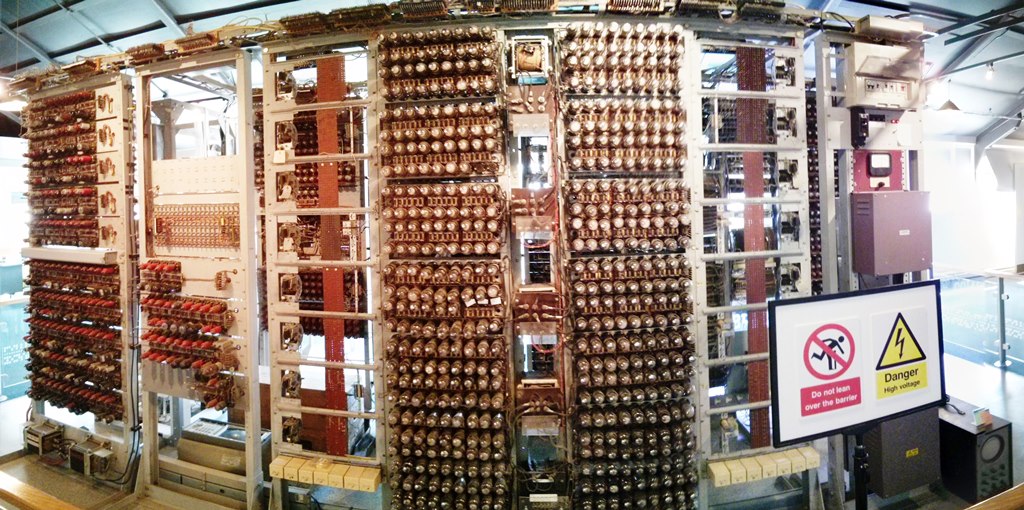
Dekatron (also not curved)
We then took the official tour, available on Tuesdays only. We saw several more very early computers which I found totally interesting. The most interesting of these was the Dekatron. If you don’t think Colossus qualifies as a computer, then the Dekatron was the first digital computer. It was fully programmable, had an ALU, memory, and output. It was based on a 10-position cold cathode tube (a little like a Nixie display). It was naturally a decimal machine (not binary) and consumed very little power when compared to other computers based on vacuum tubes.
After that, things got less interesting and even I was happy when the tour ended. Poor Danita, of course, was mildly interested, but found herself lagging behind most of the day.
Coming back to the hotel was mostly uneventful except that we somehow got into the wrong tube station and had to take a different line, which turned out to be the only line in London that was delayed due to some kind of signaling problem. This was a kind of a big deal because we had tickets to the Royal Ballet. The tube station near the Opera House is closed, forcing a rather long and obscure walk through part of London we had not yet visited. We didn’t want to be late for Ballet, so we hailed a cab. I’m convinced it took us as long to get to the Opera house as if we had walked, due to evening traffic. But we arrived in plenty of time.
The ballet was incredibly good. London has one of the world’s best ballet companies which, of course, performs with their own live pit orchestra. The Opera House is an amazing venue. It all adds up to extremely high expectations, which the performance easily exceeded. They started out with an ballet based on Shakespeare’s “A Midsummer Night’s Dream”, along with Mendelssohn’s music. You might recall we watched stage actors perform the play with the BSO playing the music. I joked that the Baltimore show was better, because the audience gave the BSO a standing ovation but the London audience did not. But the simple fact was that the stage setting, choreography, and dancing were all superb — as was the pit orchestra. It was an incredible experience, and the night wasn’t over yet. We next watched a contemporary dance. I cannot even begin to describe it, but it was another incredible performance, in a totally different style than the traditional style of the first dance. But wait, there’s more! We were treated to a third dance, which was the funniest ballet we ever saw. I can say this without hesitation, because it was the first funny ballet I ever saw. It never occurred to me that ballet could even be funny. They had a pianist on stage to play as the soloist with the orchestra. He did a kind of Liberace routine, but without all the sequins and exaggerated arm waving. The dance included dancers that got their steps wrong, ended up in the wrong place, etc. In the end, the dancers were being butterflies. The pianist finally got so disgusted he stopped playing and started chasing the dancers with an over-sized butterfly net. It could have been exasperating “stick”, but it was very well done by dancers and musicians who obviously knew exactly what they were doing and exactly how to make it funny. So we ended up with 3 dances, all very well done, and all in different styles.
When we got back to our hotel, it was almost midnight. We were in high spirits but quite tired, and immediately fell asleep.

